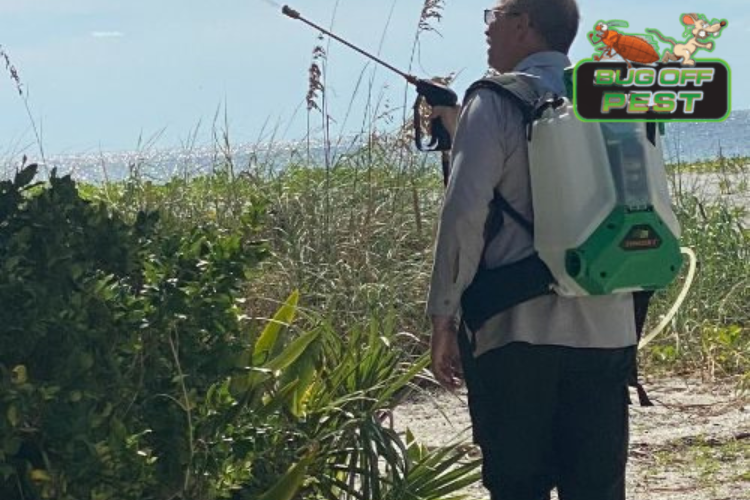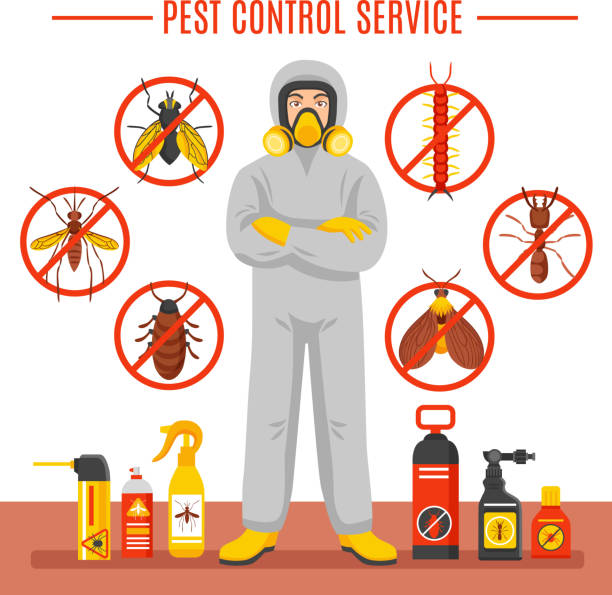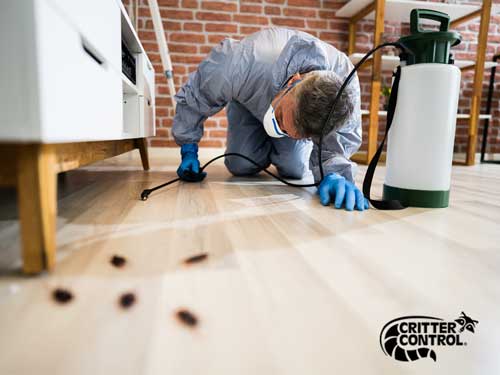Trusted Wildlife Removal Services in Port Charlotte to Safely Remove Pests
Learn More About the most up to date Developments in Bug Control and Exactly How to Execute Efficient Treatment Solutions
In recent times, the field of insect control has witnessed significant developments, driven by the need for sustainable and effective therapy solutions. Ingenious strategies such as Integrated Bug Management (IPM) integrate environmentally friendly experiment sophisticated technology, improving both efficiency and environmental responsibility. The assimilation of wise innovations and Do it yourself approaches has actually equipped individuals to take on parasite concerns a lot more properly. As we explore these growths, it ends up being necessary to comprehend just how best to implement these strategies in various settings to attain optimum results. The ramifications for bug administration methods might be transformative.
Eco-Friendly Parasite Control Options
In recent times, the demand for eco-friendly insect control options has actually risen as house owners and businesses alike seek sustainable options to typical chemical therapies. This change is driven by expanding environmental understanding and a wish to reduce the wellness dangers connected with artificial chemicals.

Green pest control techniques include a series of techniques that prioritize using natural compounds and practices. Integrated Insect Administration (IPM) is one such technique, combining biological, cultural, and mechanical methods to take care of insect populations while reducing dependence on chemicals (Wildlife removal services). This holistic method emphasizes prevention via habitat adjustment and the introduction of natural killers, thus cultivating a balanced environment
An additional prominent option is making use of agricultural chemicals acquired from plants, which often tend to be much less hazardous to non-target microorganisms. Products like neem oil and diatomaceous earth have gotten grip for their performance in managing pests while presenting minimal dangers to human health and the environment.
In addition, exclusion methods, such as sealing entry factors and maintaining sanitation, play a crucial duty in green parasite monitoring. By taking on these sustainable techniques, people and businesses can properly manage pests while advertising a healthier world for future generations.
Smart Modern Technology in Insect Administration
Development is reshaping the landscape of parasite management, with clever technology becoming a pivotal pressure in improving effectiveness and effectiveness - Wildlife removal services. The assimilation of Web of Points (IoT) devices, expert system (AI), and data analytics is reinventing just how bug control professionals come close to invasions
Smart catches geared up with sensors can detect bug task in real-time, sending out instant informs to operators. This enables timely actions, decreasing damages and lowering the demand for considerable therapies. In addition, AI algorithms examine historic data to predict pest behavior, allowing positive interventions based on ecological conditions and infestation patterns.
Drones and automatic cars are additionally playing a significant role in bug monitoring, providing airborne evaluations of huge areas, determining hotspots, and also dispersing targeted therapies. These modern technologies not only enhance procedures yet likewise enhance safety by restricting human exposure to possibly damaging chemicals.
Moreover, mobile applications equip consumers to check insect activity and gain access to professional guidance, promoting a collaborative approach to pest management. Overall, the adoption of clever modern technology is establishing a brand-new criterion in insect control, stressing data-driven choices and lasting techniques that eventually profit both specialists and house owners alike.
Integrated Bug Monitoring Techniques
Integrated Insect Administration (IPM) employs an all natural approach to pest control, combining various approaches to efficiently take care of termite control pesticides pest populations while reducing dangers to human health and wellness and the atmosphere. IPM focuses on understanding the pest life process, their all-natural adversaries, and the ecological community in which they grow.
One of the basic parts of IPM is monitoring pest populaces through regular examinations and data collection. This permits the recognition of insect limits, figuring out when intervention is needed. Social methods, such as plant turning, hygiene, and habitat control, are necessary in minimizing parasite occurrence and advertising plant health and wellness.
Mechanical controls, consisting of catches and obstacles, are also essential in IPM. These techniques can physically remove or prevent parasites without using chemicals. When required, the cautious application of chemical controls is utilized, concentrating on targeted treatments that lessen environmental impact.
Education and learning and cooperation among stakeholders, consisting of farmers, insect control experts, and the neighborhood, are vital for the effective implementation of IPM strategies. By prioritizing sustainable methods, IPM not just addresses pest problems however additionally cultivates a much healthier environment.
Biological Control Approaches
Countless biological control methods are progressively recognized for their efficiency in handling bug populaces while advertising environmental equilibrium. These approaches harness natural killers, bloodsuckers, and virus to lower pest numbers without depending on artificial chemicals. The introduction of ladybugs can successfully control aphid populaces, while nematodes target soil-dwelling pest larvae.
Additionally, the usage of microbial chemicals, such as Bacillus thuringiensis (Bt), provides an eco-friendly option for handling caterpillar insects. These products especially target pest varieties, decreasing damage to beneficial bugs and pollinators. Conservation organic control highlights enhancing habitats for natural adversaries, such as birds and useful bugs, thereby motivating their visibility in farming systems.
Study remains to reveal cutting-edge techniques within this area, such as making use of scents to disrupt pest breeding patterns or the development of biocontrol agents through hereditary design. Implementing these methods can cause lasting parasite management practices that reduce the reliance on chemical interventions, eventually cultivating much healthier communities. As understanding of these methods expands, they are coming to be indispensable components of integrated pest management (IPM) techniques, providing an equilibrium in between reliable bug control and ecological stewardship.
DIY Pest Control Solutions
As property owners seek reliable means to deal with insect issues, do it yourself bug control options have gotten appeal for their accessibility and cost-effectiveness. These approaches equip individuals to address problems utilizing readily offered materials and techniques, often without the demand for expert intervention.

In useful content addition, keeping appropriate cleanliness and routine examinations can avoid insect entry and nesting (Wildlife removal services). Simple practices, such as securing splits, eliminating food sources, and decluttering, can significantly diminish insect populations. Traps, both homemade and commercially offered, can likewise use efficient services for surveillance and managing specific pests like bugs or rats

Final Thought
The integration of environmentally friendly pest control alternatives, wise technology, and cutting-edge administration techniques presents a thorough technique to effective parasite administration. By embracing Integrated Parasite Monitoring (IPM) and using organic control approaches, together with DIY remedies, responsible and sustainable pest control can be attained. These innovations not just improve the performance of pest monitoring practices but additionally add to a much healthier atmosphere. Executing these techniques fosters a well balanced community while properly attending to pest populations.
Green parasite control methods include a range of methods that prioritize the usage of natural substances and techniques. Integrated Bug Administration (IPM) is one such strategy, combining organic, social, and mechanical methods to handle pest populations while reducing dependence on chemicals. As awareness of these strategies grows, they are ending up being integral components of incorporated parasite administration (IPM) techniques, using a balance between efficient bug control and environmental stewardship.
The integration of environment-friendly pest control choices, smart technology, and innovative management approaches presents a thorough technique to effective bug management. By welcoming Integrated Parasite Administration (IPM) and using biological control approaches, together with DIY solutions, accountable and sustainable bug control can be accomplished.